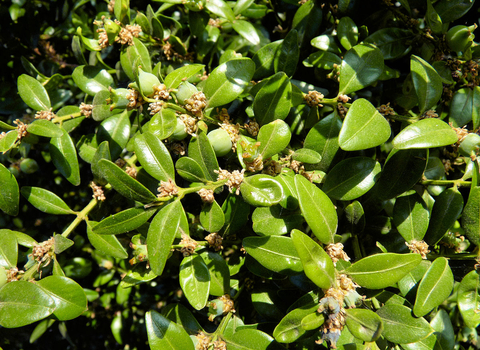
©Peter Billinghurst
Common box
Common box grows in woodlands and scrub in southern England, with notable populations in the Chilterns, Cotswolds and North Downs. A familiar evergreen tree, it has shiny, dark green, oval leaves.
Enw gwyddonol
Buxus sempervirensPryd i'w gweld
January to DecemberTop facts
Ynghylch
Although not widespread, where common box does occur, it can often be in large numbers and can live for several hundred years. Found in southern England, Box Hill in Surrey is probably the best-known population in the UK. It thrives on hillsides, and in woodlands and scrub; cultivated forms are used as ornamental and hedging plants in gardens, are often clipped into impressive examples of topiary.In April and May, both the female and male flowers can be seen on the same plant. Pollinated by the wind, each female flower dries, becoming a green capsule and then, finally, a brown, woody seed case. Common box is popular with bees and provides a dense, sheltered habitat for small birds, mammals and insects.
